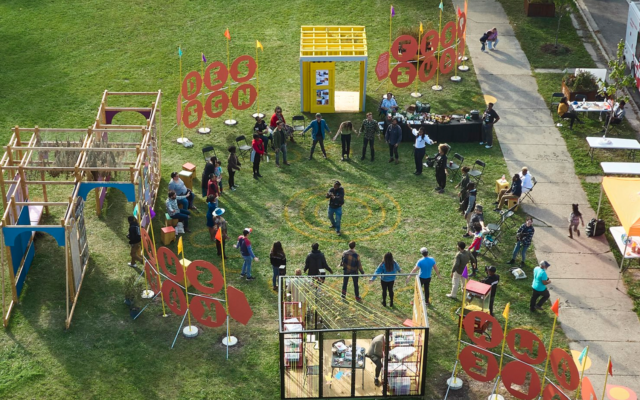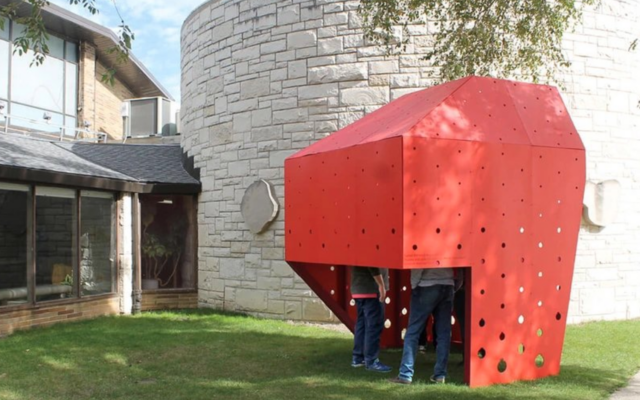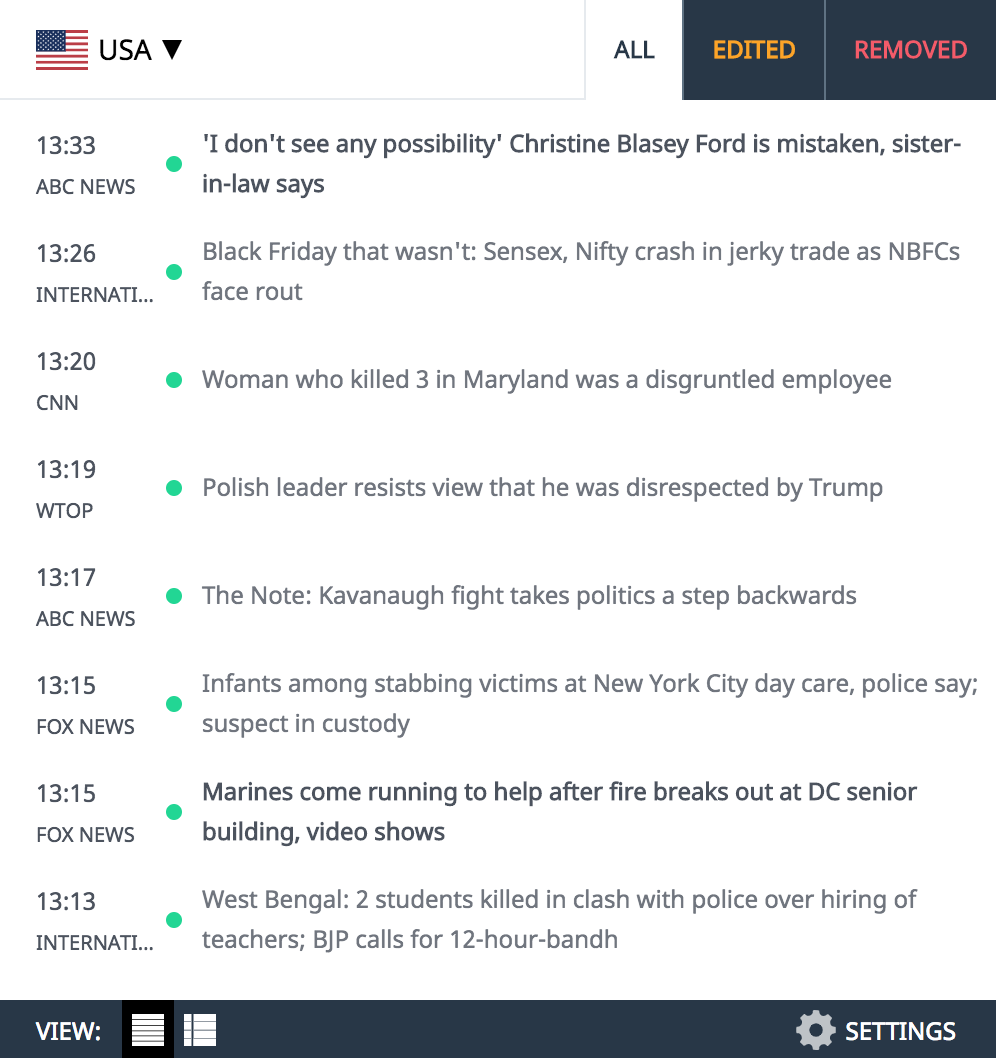CHICAGO, Illinois (JTA) — Earlier this month, 40 people gathered in Chicago’s Lawndale neighborhood to design a sukkah.
But they hadn’t come together only to build a hut for the upcoming Jewish festival of Sukkot, which began on Friday evening and revolves around Jews erecting and dwelling in temporary structures for a week.
For this interfaith, intergenerational group, constructing the impermanent space was a step forward in what they hope is an enduring relationship between a Jewish community on Chicago’s North Side and a Black-led church on the West Side.
“Interfaith, interracial, cross-city, cross-neighborhood relationship building does not happen overnight,” said Rabbi Lizzi Heydemann of Mishkan Chicago, the Jewish prayer community partnering on the project. “It’s taken over a year for us to get together three times, four times. This sustained effort of people to continue to build relationships takes a long time.”
The sukkah project is part of the Chicago Sukkah Design Festival, which was launched last year and aims to build connections between the predominantly Black West Side community of Lawndale and the city’s Jewish community, which was once centered in that neighborhood. As part of the festival, which will take place in Lawndale from October 1-15, architects partner with local neighborhood organizations to build the sukkahs, which are repurposed as permanent structures following the festival.
Get The Times of Israel's Daily Edition by email and never miss our top stories
This year, six organizations are building sukkahs, which will later become sites ranging from a pavilion for meditation or a tool library. Mishkan is the only synagogue participating in the festival, and it is building its sukkah in collaboration with the Lawndale Christian Legal Center, a legal services initiative founded by the Lawndale Christian Community Church.

The Chicago Sukkah Design Festival. (Screenshot via www.chicagosukkahfestival.org; used in accordance with article 27a of the Copyright Law)
Through building the sukkah, which will later serve as a memorial to 41 victims of gun violence who were part of the legal center, the communities hope to reckon both with present tragedy and historical pain.
The sukkah’s design will address the departure of Jews from Lawndale during the postwar “white flight” era, when white residents left newly integrated urban neighborhoods en masse for the suburbs. Lawndale once had 60 synagogues and 75,000 Jewish residents. By the mid-1950s, only 500 were left.
“It’s a sad, hard, important-to-reckon-with piece of Jewish history in Chicago,” said Heydemann, who delivered a sermon on that topic to the church on a Sunday last year. That Sunday was also Tisha B’Av, the Jewish fast day that commemorates the destruction of the ancient Holy Temples in Jerusalem.
“There are people from the congregation who remember when Jews and Black people both lived in the neighborhood before Jews moved out of the neighborhood, and that was a powerful conversation,” said Diana Collymore, a deacon who has been active in Lawndale Christian Community Church since 2014. “That’s one of the strongest pieces that stayed with people. There were people from Mishkan who remembered what street the grandpa or mom or dad grew up on here.”
The communities are collaborating with two firms: Architecture for Public Benefit and Trent Fredrickson Architecture, whose architects also hope to honor that shared history and create something that is responsive to the community’s needs, backgrounds and experiences.

A sukkah at the Chicago Sukkah Design Festival. (Screenshot via www.chicagosukkahfestival.org; used in accordance with article 27a of the Copyright Law)
“One of the community members was talking about this old Jewish restaurant that now doesn’t exist anymore and whenever she would go there she would feel welcome and at home,” said Chana Haouzi, the founder of Architecture for Public Benefit. “We just spoke of feeling invited and like that you could stay as long as you like.”
The relationship between Mishkan and Lawndale Christian began when Heydemann and the church’s lead pastor, Jonathan Brooks, who is also known as Pastah J, participated in a program for early-career clergy at the University of Chicago Divinity School. They have spoken to each other’s congregations and hope for the sukkah-building process to bring their members closer together.
Members are already finding commonalities between the two congregations.
“The Jewish community that came here from Europe, they were driven here from trauma and harm, and the African-American community that came from the South in the Great Migration, they too were fleeing trauma,” Collymore said. “And both have faith and they believe in a God, and their faith brought them and encouraged them and directed them and kept them and settled them in this space.”
One way the communities are connecting and confronting the past is through shared scripture. The group designing the sukkah found meaning in a well-known passage from Ecclesiastes, which is read in synagogue on Sukkot and relates how there is a time and a season for everything under the sun.
The two groups studied the passage, interpreting and analyzing the Hebrew and translated versions. Its text will later be emblazoned on the sukkah’s walls in Hebrew script, transliterated in Hebrew and English.
“There’s appreciation around that Ecclesiastes passage,” Collymore said. “Having scripture out of both of our faiths, and especially the kind of passage so appropriate for the way things have changed here, I think this is a catalyst for more deeper conversations.”
The sukkah will have three main walls, which will feature shelves lined with vessels that contain artifacts contributed by the community to share stories and create moments of connection. At one gathering, participants painted and decorated rocks with designs and messages inspired by the passage from Ecclesiastes.
“We’ve documented a lot of the discussion, and I think ultimately it was this idea of understanding how these two communities work together and seeing the points of commonality and the focus on loving and caring for each other and putting people first and also God,” Haouzi said. “It’s really that idea that ends up being manifested in the design itself.”
In addition, Mishkan members have participated in a walking tour of the church’s community spaces and initiatives. In addition to the health center and the legal aid center, the church has a fitness center, a café with a roof deck, an organic farm, a recovery center for men who were recently incarcerated or are in recovery, and other community programs.
“It’s important for predominantly white Jewish people who have been told that they’re not safe in parts of Chicago that don’t look white and Jewish, even if these parts of Chicago used to be their grandparents’ homes, to just come there and see that this neighborhood has incredibly interesting, dynamic people who live here and projects they’re taking on,” Heydemann said. “There’s an incredible amount of [the] neighborhood investing in itself and, beyond the neighborhood, outside people looking and saying, ‘How can we be part of that?’”
When the sukkah design festival opens, the church and Mishkan will host a shared prayer service for the community. They also hope the sukkah provides a space for both shared meals and independent reflection.
“Not only will it be a physical manifestation of this collaboration between both groups but it will also invite other people to join and to host both communities to continue building on their collaboration,” Haouzi said.
Heydemann says her community’s partnership with Lawndale Christian Legal Center has led to members becoming regular monthly donors to the center and reading books that speak to its work. When the sukkah becomes a memorial to victims of gun violence, it will stand in a memorial garden whose design is being led by the legal center.
Heydemann says she hopes that when Jews come to the Sukkah Design Festival, they will feel motivated to do something “to try to reverse the decades of disinvestment.”
“I would hope that Jews across Chicago come to the festival and feel a sense of reawakened connection to this neighborhood, whether or not they have family who ever lived here,” she said. “I would also hope that Jewish people would see the sukkot and understand their own tradition, Judaism, is this beautiful, dynamic, interesting platform for relationship building across traditions.”


